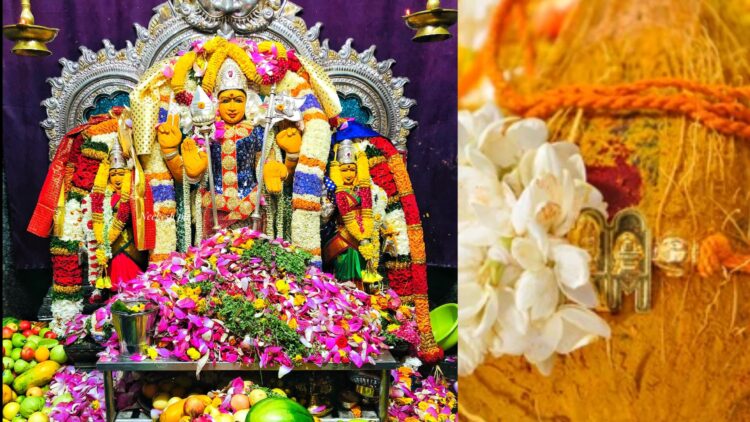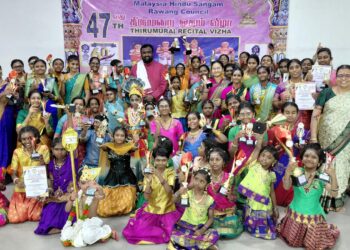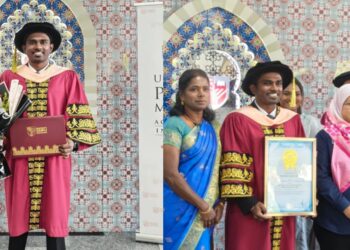Thirukalyanam, is a sacred ritual celebrating the divine marriage of Lord Murugan. It is most prominently celebrated the day after Soorasamharam, which commemorates Murugan’s victory over the demon king Soorapadman, as the culmination of the six-day Skanda Sashti festival. This joyous and elaborate ceremony unites Lord Murugan with Deivanai and includes traditional wedding rituals with profound spiritual symbolism.
Symbolic Significance
After conquering the negative forces symbolized by Surapadman, Lord Murugan unites with Deivanai. This battle represents personal inner struggles, while Thirukalyanam signifies the reward for self-conquest, leading to inner peace. Thirukalyanam also symbolizes the balance of masculine and feminine energies, with Lord Murugan embodying the masculine principle of wisdom and Deivanai representing the feminine principle of devotion. Their union brings about inner balance and harmony.
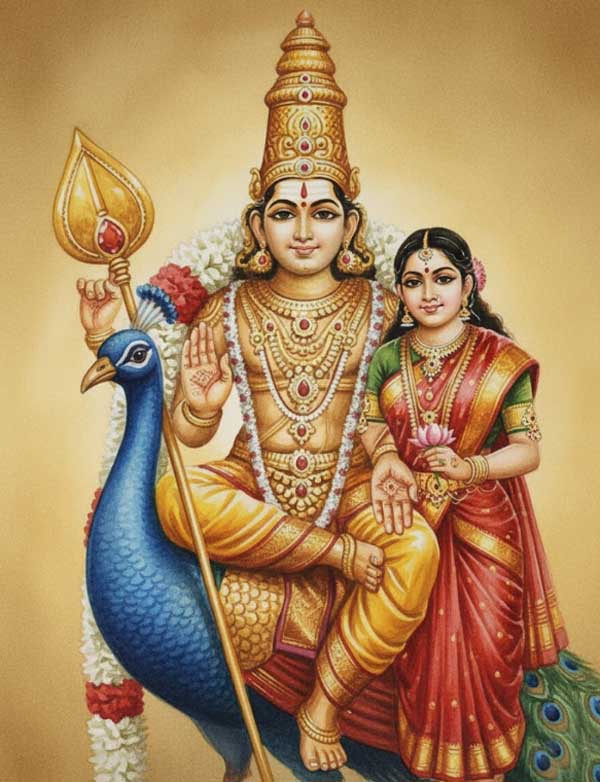
Rituals of Thirukalyanam
1. Preparations
- Deity decoration: Lord Murugan and Deivanai are adorned with elaborate and beautiful garments, garlands, and jewels.
- Ceremonial platform: A special platform (mandapam) is decorated with flowers, lights, and other auspicious symbols for the wedding ceremony.
- Procession: In many temples, the ceremony begins with a grand procession, where the deities are paraded on chariots or palanquins around the temple premises.
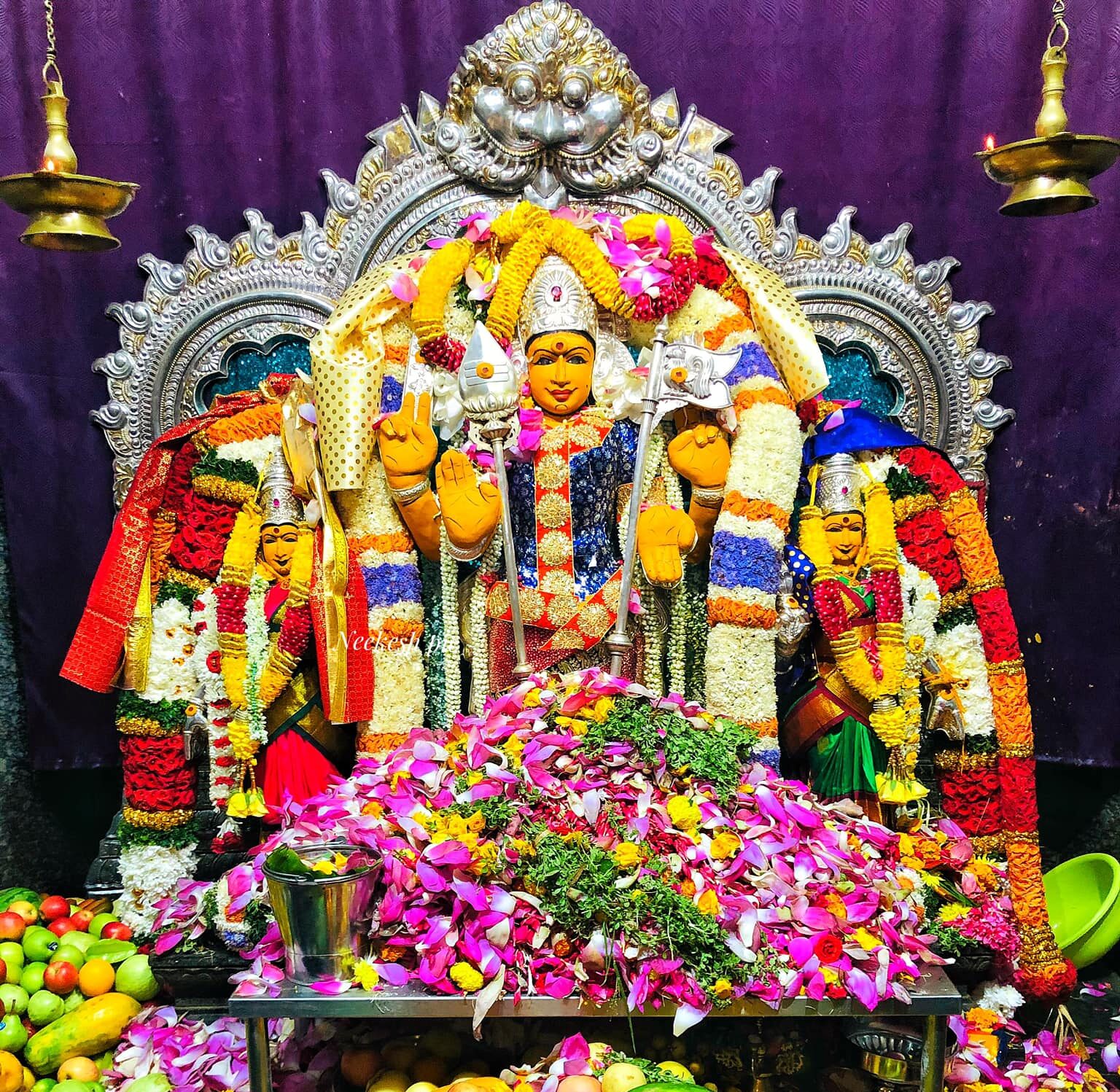
2. The Main Ceremony
- Arrival of the consorts: The rituals distinguish between Murugan’s marriage with Deivanai. Deivanai’s wedding is a formal, Vedic ceremony, reflecting her status as the daughter of Indra, the king of the gods.
- Vedic rites: Priests conduct special Vedic prayers and rituals, including homas (sacred fire ceremonies), while chanting hymns dedicated to Lord Murugan and his consorts.
- Mangalya Dharanam: The most important part of the ceremony is the tying of the sacred marriage thread (thali or mangalyam) around the Deivanai’s neck. This is performed by priests on behalf of the deities, and devotees witness the act with great reverence.
- Music and songs: Traditional music (nadaswaram and thavil), devotional songs (bhajans), and special dances accompany the ceremony, creating a vibrant, celebratory atmosphere.
- Offerings: Devotees present offerings of fruits, flowers, and sacred foods (neivedyam) to the deities.
Witnessing the Thirukalyanam is believed to offer blessings for marital harmony, family well-being and victory over obstacles. It ties together the warrior aspect of Murugan as the destroyer of evil which ends with the sacred union offering a holistic spiritual experience.
Source: Hindu Blog
Follow us on Instagram, Facebook or Telegram for more updates and breaking news.


